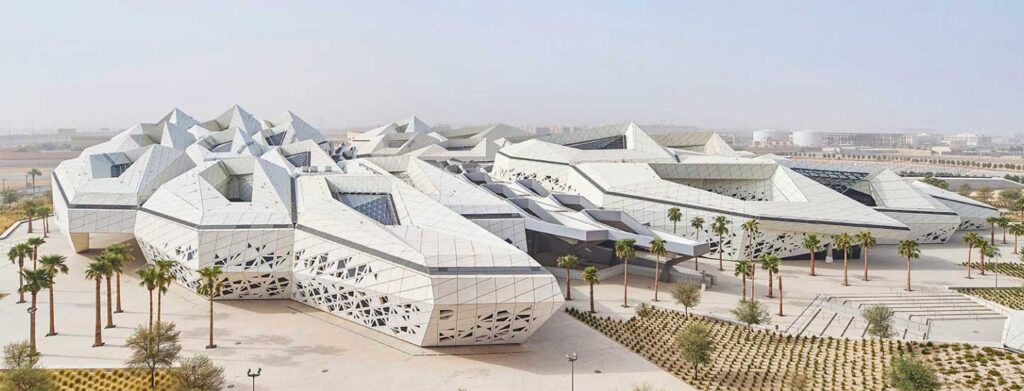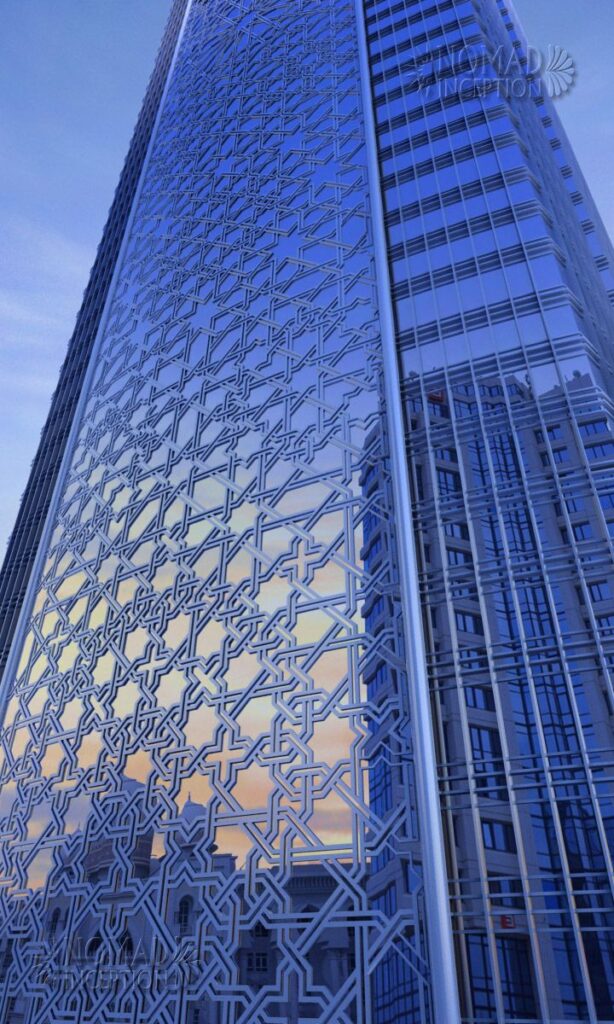Arabesque: The Timeless Dance of Geometry, Nature, and Human Perception

Arabesque is more than just a decorative art form—it is a profound architectural language that blends geometry, nature, and cognitive harmony. Originating from Islamic art, this intricate style has traveled across cultures and eras, influencing European architecture, modern design, and even neuroscience and biophilic principles.
In this article, we will explore the origins, symbolism, cognitive effects, and modern applications of Arabesque, showcasing how it continues to shape the built environment.
1. Origins and Early Influences

A. Pre-Islamic Roots
Arabesque patterns did not emerge in isolation. They were influenced by:
- Greek and Roman Art – Classical civilizations used scrolling vines and floral motifs in architecture and pottery.
- Byzantine Ornamentation – Early Christian mosaics featured elaborate interwoven designs.
- Persian and Central Asian Traditions – Early geometric and floral patterns influenced Islamic Arabesque development.
As Islamic culture spread in the 7th century, these artistic traditions evolved into a distinct style, characterized by intricate symmetry, infinite repetition, and abstraction, aligning with Islamic spiritual beliefs.
B. The Birth of Arabesque in Islamic Art
Islamic art embraced Arabesque as a response to aniconism (the prohibition of depicting living beings). Instead of figurative art, artists turned to geometry, floral motifs, and calligraphy to convey divine beauty and infinity.
Arabesque became a core feature in:
- Mosques and Palaces – Walls, domes, and mihrabs adorned with intricate patterns.
- Manuscripts and Textiles – Used to decorate religious texts and luxurious fabrics.
- Urban Spaces – Intricate tilework in fountains, courtyards, and city facades.
2. The Golden Age of Arabesque in Islamic Architecture

A. Arabesque Across Islamic Empires
Arabesque flourished in different regions, each adding its own interpretation:
- Moorish Spain (Alhambra, Spain) – Exquisite stucco work and tile mosaics with hypnotic geometric forms.
- Persia (Shah Mosque, Iran) – Blue and turquoise floral patterns on domes and minarets.
- Ottoman Empire (Suleymaniye Mosque, Turkey) – Calligraphy integrated with Arabesque motifs in domes and walls.
- Mughal India (Taj Mahal, India) – Marble inlay work with delicate floral Arabesque patterns.
- North Africa and Morocco – Zellij tilework showcasing intricate geometric symmetry.
Each region adapted Arabesque to its cultural identity, reinforcing its universal appeal.
B. Symbolism and Meaning in Arabesque
Arabesque is rich in symbolic meaning:
- Infinite Patterns – Represent the infinity of God and the interconnectedness of all things.
- Geometric Precision – Reflects order, harmony, and divine perfection.
- Nature-Inspired Motifs – Emphasize spiritual growth and paradise.
- Interconnectivity – Patterns weave together like a universal order, reinforcing unity.
3. The Cognitive Impact of Arabesque Patterns in Architecture

A. How Arabesque Affects the Human Brain
Arabesque is not just visually stunning; it also affects the human mind in profound ways:
- Repetition and Symmetry create a sense of order and harmony, reducing anxiety.
- Complex Geometries engage the brain, fostering focus and mindfulness.
- Neuroscience research suggests that looking at Arabesque patterns activates areas of the brain linked to relaxation and creativity.
- Spatial Awareness – Arabesque influences perception of space, enhancing movement through architectural settings.
B. Cognitive Applications in Architectural Spaces
Because of its calming and engaging effects, Arabesque is used in:
- Prayer Halls – Enhancing spiritual focus.
- Therapeutic Spaces – Applied in hospitals and wellness centers.
- Educational Settings – Stimulating cognitive engagement and learning.
- Retail and Hospitality – Creating immersive, visually rich experiences.
4. Arabesque and Biophilic Design: A Hidden Connection?

A. Nature-Inspired Patterns
Though abstract, Arabesque shares deep biophilic principles:
- Fractal Geometry – Arabesque patterns resemble natural fractals (e.g., tree branches, flower petals), known to reduce stress.
- Organic Flow – The curves and interwoven lines of Arabesque mirror natural growth patterns, evoking a subconscious connection to nature.
- Light and Shadow Play – Traditional Mashrabiya screens (wooden lattice windows) create dynamic, nature-like light filtering, similar to sunlight passing through tree leaves.
B. Case Studies in Biophilic Arabesque
Louvre Abu Dhabi – Dome filters light like tree canopies.

Sheikh Zayed Mosque – Floral motifs create a paradise-like serenity.

King Abdulaziz Center for World Culture – A contemporary Arabesque-inspired facade.

5. Arabesque in Contemporary Architecture

A. Revival of Arabesque in Modern Landmarks
- Louvre Abu Dhabi (UAE, Jean Nouvel) – A geometric dome filters sunlight like a Mashrabiya, creating a “rain of light.”
- King Abdullah Petroleum Studies and Research Center (Saudi Arabia, Zaha Hadid Architects) – Uses a futuristic honeycomb-inspired Arabesque facade for shading and aesthetics.
- Doha’s National Museum – Inspired by the natural desert rose, blending Arabesque principles with organic form.
B. Digital & Parametric Arabesque Design
- Computational Design and 3D Printing – CNC-cut screens and parametric facades.
- Sustainability and Light Filtering – Mashrabiya-inspired Arabesque for natural cooling and shading.
6. Arabesque in Hospitality and Retail Design: Creating Engaging Experiences

A. The Role of Arabesque in Luxury Hotels
- Enhancing cultural richness and exclusivity.
- Creating calm and elegant atmospheres.
B. Retail and Brand Identity
- Used in high-end boutiques and shopping malls.
- Luxury brands like Louis Vuitton and Cartier incorporate Arabesque elements in store designs.
- Retail Spaces – Arabesque elevates brand identity through immersive aesthetics.
7. The Future of Arabesque: Innovation and Cultural Identity

A. Blending Tradition with Digital Design
- AI and Parametric Tools – Generating complex Arabesque variations.
- Futuristic Facades – Arabesque used in adaptive and sustainable buildings.
B. The Role of Arabesque in Future Architecture
- Urban Applications – Public installations, smart facades.
- New Materials – Incorporating LED and kinetic Arabesque elements.
Conclusion
Arabesque is more than an ornament—it is a philosophy of harmony, beauty, and cognitive well-being.
From ancient palaces to cutting-edge architecture, Arabesque continues to fascinate, inspire, and connect people across cultures. As technology pushes its boundaries, this timeless art form will keep evolving while staying true to its essence.
